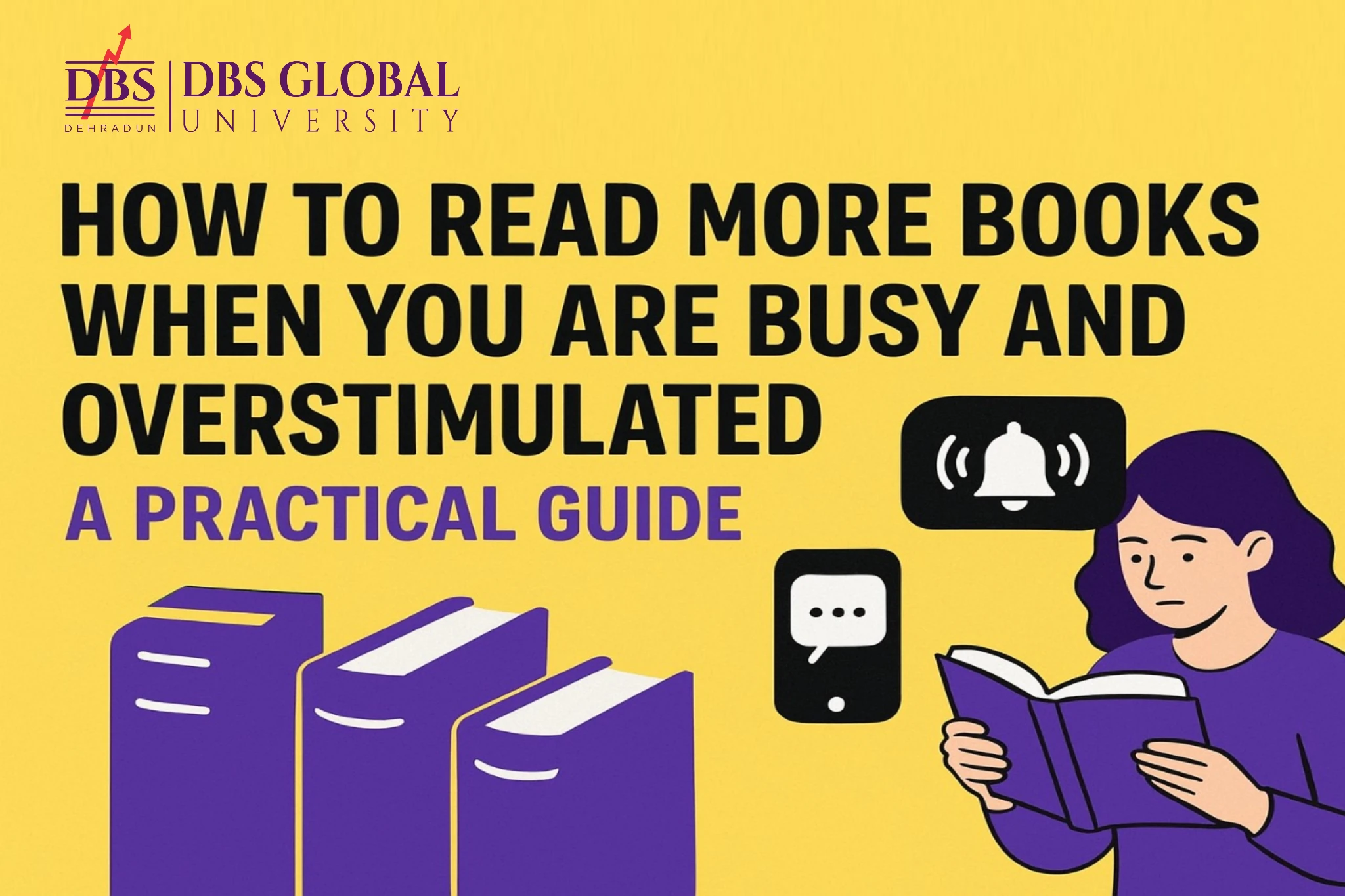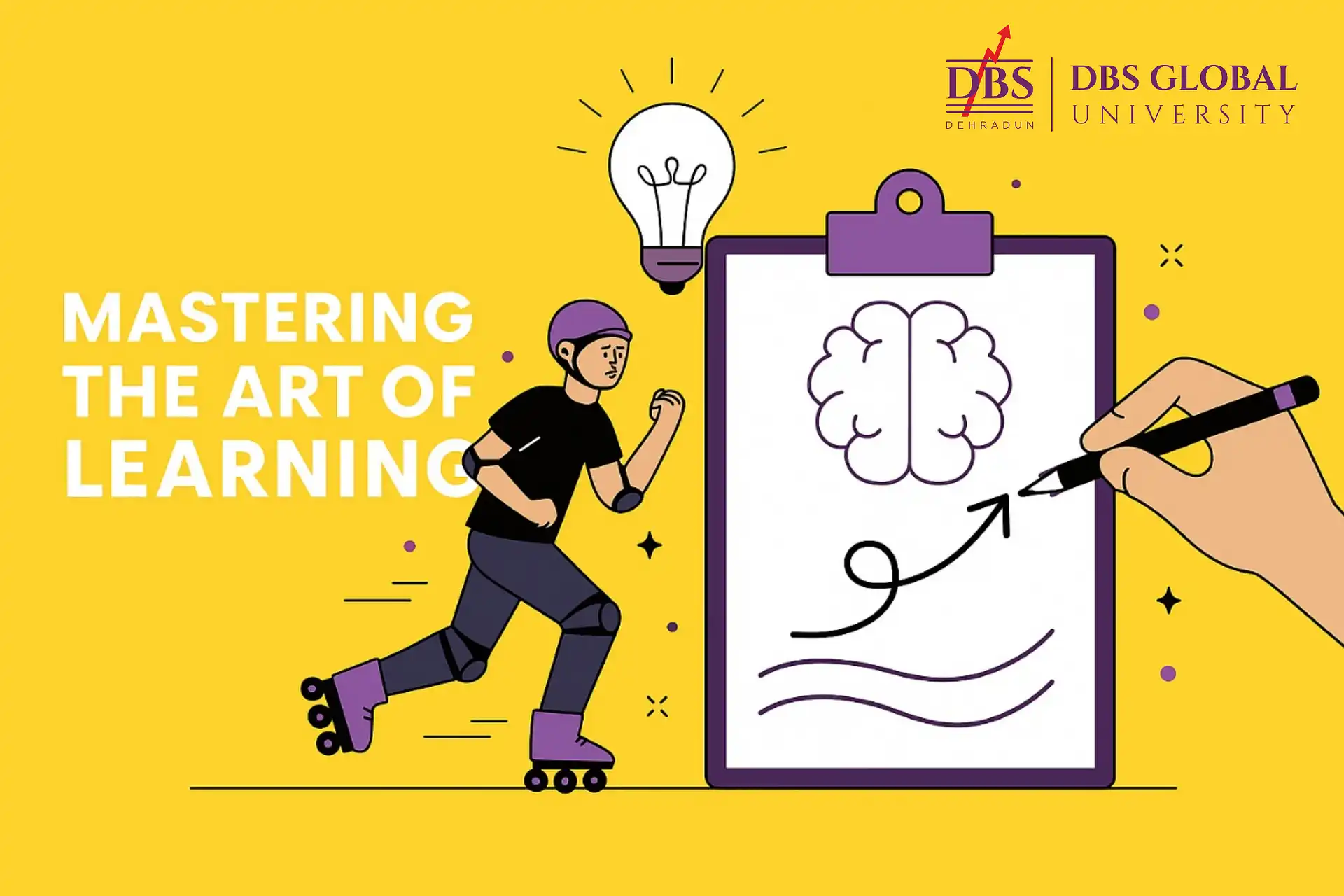
How to Read More Books When You Are Busy and Overstimulated: A Practical Guide
admin
- 0
Introduction: Why Your Books Are Collecting Dust
You open a book, determined to read, and two minutes later, your phone buzzes again. The same pattern repeats day after day, leaving your shelves dusty and your best intentions abandoned. Between work deadlines, classes, household chores, and the endless scroll of social media, finding time and focus to read feels nearly impossible.
It’s not that you are lazy or lack motivation; it’s that you live in an age of overstimulation. Studies show that the average person checks their phone 58 times per day, spending over 3 hours daily scrolling through apps that flood the brain with instant rewards. Books, which require patience and immersion, suddenly feel slow, or worse, guilt-inducing. Every notification, message, or video delivers a quick dopamine hit, pulling your attention in every direction. Books, which require patience and immersion, suddenly feel slow, boring, or guilt-inducing.
Here’s the good news: reading doesn’t demand hours of uninterrupted silence. With small, science-backed habits, you can fit books back into your life. This guide explains why reading matters more than ever, how modern distractions break your focus, and seven practical habits, plus tools and a four-week plan, to help you read more without stress.
Why Reading Builds Focus in a Distracted World
Leisure reading is steadily declining. According to a 2022 Pew Research study, adults under 35 read fewer than three books a year on average, even as their daily screen time climbs beyond four hours. We are living in an attention economy designed to pull you in every direction, and it’s working.
Scientific research is clear on this. Regular reading exercises your brain’s working memory, improves attention span, and deepens critical thinking. A 2013 NIH study found that engaging with narratives activates regions linked to empathy and cognitive flexibility, while longitudinal studies suggest that regular mental stimulation through reading is associated with slower cognitive decline in later years.
For students, reading comprehension correlates with academic performance, test scores, and learning capacity. For professionals, deep reading improves problem-solving, communication, and creativity. Even on an emotional level, stories help you process experiences, manage stress, and build resilience against the constant demands of modern life.
Reading is not merely a leisure pursuit; it’s one of the most powerful mental workouts available today. In an era dominated by fast videos, quick posts, and endless notifications, the ability to focus deeply on a story, idea, or argument is a competitive advantage and a path toward greater mental clarity, purpose, and peace.
If you want to thrive, not just survive, reclaiming your ability to read deeply isn’t optional; it’s essential.
How Technology Steals Your Focus and Rewires Your Brain
In today’s digital landscape, distractions aren’t accidental; they’re engineered. The platforms and devices we rely on are designed to pull your attention away from sustained, meaningful activities like reading. Every interaction, from notifications to autoplay features, feeds into a reward system that favors instant gratification over deep thinking.
Neuroscience explains what’s happening behind the scenes. When you engage with fast-paced, unpredictable content, your brain releases dopamine, the chemical associated with pleasure and motivation. These small bursts of reward create what psychologists call intermittent reinforcement, a powerful force that makes you crave constant stimulation. Over time, your brain learns to prioritize quick, surface-level interactions instead of slow, focused engagement.
This isn’t a problem with discipline; it’s a problem with design. Digital platforms capitalize on how our attention naturally works. Infinite scrolling, autoplay videos, and social validation mechanisms are all crafted to keep you hooked, pulling you away from activities that require more effort but deliver deeper rewards.
As your brain adapts, it begins to associate immersive tasks like reading with frustration or boredom. The sustained attention and patience books demand feel foreign compared to the instant feedback loops of modern technology. Without conscious effort, this shift can lead to fragmented focus, anxiety, and even burnout.
The good news? You can reclaim your ability to focus, not by fighting your impulses, but by understanding how attention is shaped and deliberately restructuring your environment to work with it. In the following sections, you will learn how to harness this knowledge and build habits that allow reading to fit seamlessly into your overstimulated lifestyle.
Seven Science-Backed Habits to Read More Without Stress
Building a reading habit doesn’t mean overhauling your entire life overnight. Small, intentional changes, rooted in how the brain actually works, can make reading feel effortless rather than overwhelming. Here are seven strategies supported by research and widely practiced by successful readers, students, and professionals alike.
- •The 25-Minute Pocket of Time Method
Set a timer for 25 minutes, silence your phone with “Do Not Disturb,” and find a quiet space. Studies on attention span and task engagement (like the Pomodoro Technique) suggest that 25 minutes is a sweet spot, it’s long enough to immerse yourself but short enough to avoid mental fatigue. Start with just three or four sessions per week. In a month, these short bursts could help you finish a book without burning out.
- •Use Audiobooks During Commutes and Chores
Reading doesn’t always have to happen on a couch. Neuroscience shows that listening to audiobooks activates similar language-processing regions as reading text. Try pairing them with routine tasks like commuting, meal prep, or household chores. Many professionals report doubling their monthly reading output by treating audiobooks as “productive downtime.”
- •Micro Reading Sessions: 10 Minutes Twice a Day
You don’t need to wait for uninterrupted hours. Two short, focused sessions, one in the morning and one before bed, can build momentum. Researchers call this “habit stacking”: associating reading with existing routines. Think of these as brain snacks that, over time, accumulate into hundreds of pages without feeling forced.
- •Create a Mini Reading Ritual to Trigger Focus
Habits form more easily when paired with cues. Rituals signal your brain that it’s time to switch modes. It could be as simple as brewing tea, sitting in your favorite chair, or playing soft background music. The routine helps shift your attention away from distractions and prepares your mind for immersive reading. Even small rituals can significantly increase habit consistency.
- •Curate a Short, Intentional Reading List
Too many options lead to decision fatigue, a well-documented psychological barrier to habit formation. Pick just one or two books at a time and commit to finishing them. For example, one professional book paired with one novel or memoir keeps your list balanced and purposeful. Finishing titles creates a sense of accomplishment, reinforcing the habit loop.
- •Use Summaries When Time is Tight
When life gets hectic, don’t worry about “all or nothing.” Book summary apps or annotated guides can help you retain key ideas quickly. Research in spaced learning shows that exposure to core concepts, even in compressed formats, can spark curiosity and keep knowledge accessible. Summaries aren’t a replacement, but they can keep you mentally connected until you have more time.
- •Pair Reading with Social Accountability
Reading may feel solitary, but shared experiences make habits stick. Join a book club, share progress with friends, or post updates online. Social accountability triggers motivation by leveraging peer support and positive reinforcement, both of which are essential in habit formation. When reading feels like a shared journey, it’s easier to stay consistent.
Tools and Formats That Help Busy Readers Stay Consistent
It’s easy to assume that technology is the enemy of focus, but when used intentionally, it can be one of your strongest allies in building a reading habit. The key is to choose tools that support reflection, convenience, and accountability rather than constant distraction.
- •E-Readers and Note-Syncing Apps
Devices like Kindle, Kobo, or apps like Google Play Books let you highlight passages, bookmark pages, and sync notes across devices. This transforms reading from a passive activity into an interactive experience. Highlighting key ideas reinforces memory, while syncing notes allows you to revisit and review them later, boosting long-term retention and deep understanding.
- •Audiobook Platforms
Apps like Audible, Storytel, or Scribd allow you to “read” while commuting, exercising, or doing chores. Listening engages the brain’s auditory and language networks in a way that mirrors reading comprehension, helping you stay connected with books even when time is scarce. Many users report that pairing audiobooks with routine tasks helps them consume more content without feeling guilty about multitasking.
- •Digital Libraries and Subscription Services
Access thousands of titles instantly through platforms like OverDrive, Libby, or your local library’s digital resources. Students at DBS Global University, for example, can borrow e-books, join virtual reading circles, and track their progress through library apps. These tools eliminate wait times and make books more accessible, removing barriers to regular reading.
- •Note-Taking and Reflection Apps
Apps like Evernote, Notion, or OneNote turn your reading into an active learning practice. Summarize chapters, jot down insights, or connect ideas across books. Reflection strengthens comprehension and helps transform information into knowledge you can apply in conversations, work, or academics.
Why These Tools Work
Research on habit formation and cognitive psychology shows that small cues, easy access, and instant feedback significantly boost consistency. By integrating tools that simplify organization and reduce friction, you are more likely to sustain reading as part of your routine without added stress.
If you are unsure where to begin, here’s a thoughtfully curated list to jumpstart your journey:
A Four-Week Reading Plan to Build Consistency
- •Week 1 – Find Your Time Slot
Choose one book that genuinely excites you and carve out a fixed 25-minute reading slot every day. It could be before breakfast, during a lunch break, or just before bed. The key is consistency, not quantity. By the end of the week, your brain will begin to expect that daily pause with a book.
- •Week 2 – Add Audiobooks
Bring stories and ideas into the in-between spaces of your day. Pick one audiobook that complements your current read and listen while commuting, cooking, or folding laundry. This way, books become part of your background rhythm instead of a separate chore.
- •Week 3 – Build a Reading Ritual
Turn reading into an experience, not just an activity. Create a small ritual: a cozy chair, a cup of tea, or even lighting a candle before you open your book. These sensory cues anchor the habit and make reading something your mind begins to look forward to automatically.
- •Week 4 – Share and Celebrate
Reading is more joyful when shared. Join a book club, exchange notes with a friend, or post a quick reflection online. Celebrating your progress not only keeps you accountable but also inspires others to read alongside you.
The Outcome
By the end of four weeks, you will not only have finished a book but also built a steady reading rhythm that fits naturally into your lifestyle. The plan is not about speed; it is about creating a habit that sticks and a ritual you actually enjoy returning to.
Conclusion: Start Small, Stay Consistent
In a world buzzing with notifications and constant noise, reading can feel like a luxury reserved for quiet days that rarely come. The truth is, it does not require endless hours, it only takes small, deliberate steps. A focused 25-minute session, an audiobook during chores, or a simple ritual like tea and a corner chair can gradually reshape your relationship with books.
Here is your challenge: pick one habit today. Set a reminder, try it for a week, and notice the shift. Even tiny wins, finishing a chapter, listening to ten minutes of an audiobook, or sharing a quote with a friend, can transform not only how you read, but how you approach learning and life itself.
FAQ: Frequently Asked Questions
Q1: Why is it hard to find time for reading in a busy schedule?
Many people struggle to read regularly because work, social obligations, and digital distractions take up most of their mental energy. Without planning, reading often gets postponed or skipped entirely.
Q2: How can I stay consistent with reading even when life feels overwhelming?
Consistency comes from small, practical habits: reading for 5–10 minutes daily, using audiobooks during commutes, carrying a book everywhere, or setting aside dedicated “reading time” in your calendar.
Q3: What is spaced reading and how does it help?
Spaced reading means revisiting portions of a book or material over increasing intervals (e.g., 1 day later, then 3 days, then a week). This reinforces memory and helps retain information better.
Q4: How can active reading improve retention?
Active reading involves annotating, summarizing in your own words, asking questions, and self-testing. This approach strengthens comprehension and long-term memory.
Q5: What type of reading format is best when overstimulated?
Audio, short articles, or e-readers with adjustable fonts can be gentler on the mind. Switching formats helps you bypass mental fatigue and keep reading momentum.
Q6: How can DGU help me with lifelong learning and reading habits?
At DGU, our academic environment encourages continuous growth and learning. Explore articles, workshops and reading resources offered across our DGU Blog to build stronger learning habits.
Here is a thoughtfully curated list to jumpstart your journey: 10 Books Every MBA Aspirant Must Read.


